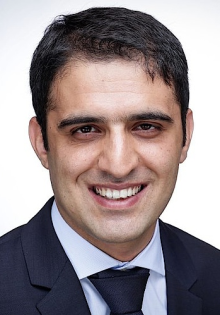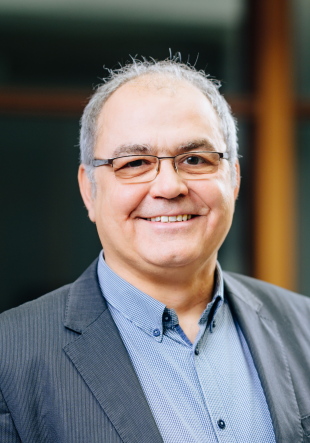FOR 2863 - Traceable Terahertz Transceivers (B2)
Overview
The B2 project of Meteracom focuses on the signal traceability in electronic THz analog transmit and receive frontends, including their functional building blocks for wideband THz signal generation, translation, amplification and sampling. The main objectives in phase II are to expand the transceiver functionalities towards the traceability of impairments on the physical chip level, to improve the THz frequency synthesizer based on the optoelectronic PLL and to conduct joint THz communication experiments. Building on the THz transceiver chip sets and the comprehensive electro-magnetic circuit design flow established in phase 1, the transceiver MMICs shall be enhanced through self-test, self-calibration and in-circuit test functionality, by including scalar or vectorial power detectors between functional transceiver stages (PI Kallfass). Furthermore, the transceivers shall be equipped with variable gain amplifiers for automatic gain control. The resulting “traceable THz transceivers” will provide a measurement platform for the calibration of the physical transceiver model in project C3, and provide measurement data for the machine-learning oriented projects C1 and C2 and the traceability project T. Right from the start of phase 2, the B2 project will provide measurement data to fellow projects obtained from an existing 300 GHz link capable of frequency-division-multiplexing and complex digital modulation up to 256 QAM inline with the IEEE802.15.3d standard. The wideband THz synthesizer based on an optoelectronic PLL (OEPLL) which was demonstrated in the first phase shall be further improved (PI Scheytt). The improvements target even lower phase noise and improved frequency tuning resolution. The phase noise and spurs of the modified OEPLL will be mathematically analyzed and modelled. An improved OEPLL synthesizer will be built and measured to validate the mathematical analysis. The model of the improved OEPLL synthesizer will be integrated into the physical transceiver model of C3. Regarding optical sampling techniques (PI Schneider, PI Scheytt), in the first phase the major error sources have been determined to be the jitter of the RF source, the phase noise of the CW laser or MLL, respectively, and nonlinearity. In the second phase, we will build on these results and, in strong collaboration with A3, we will use algorithms and models developed in C3 for the evaluation of THz communication experiments.
Key Facts
- Grant Number:
- 403579441
- Research profile area:
- Optoelektronik und Photonik
- Project type:
- Forschung
- Project duration:
- 01/2022 - 12/2024
- Funded by:
- Deutsche Forschungsgemeinschaft (DFG)
- Website:
-
DFG-Datenbank gepris
More Information
Contact
If you have any questions about this project, contact us!
Meysam Bahmanian
System and Circuit Technology / Heinz Nixdorf Institut
Wissenschaftlicher Mitarbeiter




